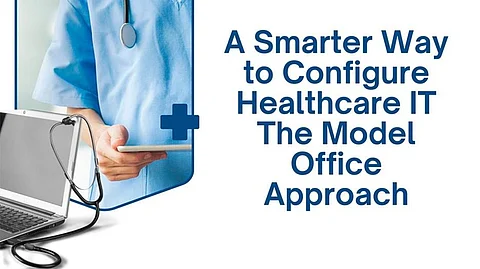

Healthcare IT is evolving rapidly, with organizations facing increasing challenges in modernizing legacy systems while ensuring operational continuity. In a groundbreaking study, Subash Lekshmi Velayudhan, an expert in healthcare IT solutions, presents the Model Office approach, a framework designed to streamline system configurations through reusable and standardized methodologies. His insights, published in a leading research journal, highlight how this innovative approach enhances efficiency, reduces costs, and improves compliance across various healthcare platforms.
Managing and gathering tons of organizational health data does not come cheap; it often climbs along the regulatory ropes of technology and interoperability. Most traditional configurations create redundancy, which eventually gets translated into costs and errors. The Model Office methodology provides the structured solution. It introduces modular and template-based configuration, thus enabling an enterprise to put the changes into effect even though compliance still is maintained.
The most important innovation of the Model Office is standardization. Standardized repository configuration templates allow organizations to save a lot of time during an implementation. This model-driven approach has been recorded to cause a reduction in implementation lead times of 30 to 40% vis-a-vis the traditional way. The reusability of configurations enhances regulatory-change response rates by allowing organizations to accommodate incoming policies swiftly without needing extensive reconfiguration work.
The Model Office is a modular design approach, enabling the health information technology team to devise bespoke yet scalable solutions. Instead of developing every configuration from scratch, teams use proven modules, thus reducing configuration errors and operational risks. Innovation has thus far shown a reduction in system maintenance cost by around 25% and configuration errors from 7% to 2.5 %. Such improvements would, for example, mean cost savings of $ 2.5million - $ 5 million in a year for large-scale healthcare organizations.
Regulatory compliance is a major concern in healthcare IT. The Model Office framework integrates automated validation tools, significantly improving compliance accuracy. They have registered a 50% improvement in regulatory validation efficiency, conforming to industry regulation with configurations. In addition, standard testing frameworks help cut down on post-deployment errors by 70%, thus enabling smooth transition from implementation to operation.
The Model Office approach is particularly beneficial for healthcare organizations managing multiple lines of business. In contrast, approaching the problem would yield a configuration reuse rate of probably 75% across jurisdictions without compromising fidelity and efficiency. States are using the Model Office. For their multi-state healthcare configuration, this has resulted in savings of around 30% of administrative overhead costs due to standardization.
The methodology has been successfully implemented across leading healthcare IT platforms, demonstrating significant improvements in efficiency and accuracy. Organizations leveraging structured configuration models have experienced:
● 95% accuracy in benefit configurations
● 90% success in first-attempt integrations
● 50% reduction in manual processing requirements
These outcomes highlight the scalability and adaptability of the Model Office approach, proving its effectiveness in optimizing diverse healthcare IT infrastructures.
The phased approach-an assessment, design, construction and validation-seen by an institution can systematically bring more precision in its application of healthcare IT solutions. It will have the Model Office concept to make each stage a systematic planned reduction-for example, unforeseeable costs and implementation failures. Thus, organizations which have put a large amount of time into the assessment phase alone have reduced actual project risks around 60% and translated much more than that into execution.
As healthcare technology continues to evolve, the need for flexible, scalable, and compliant IT solutions will grow. The Model Office methodology paves the way for a more agile and cost-effective approach to system configuration. With its ability to standardize implementations, automate compliance, and reduce configuration errors, this model is set to become a cornerstone in healthcare IT modernization efforts. Organizations that adopt this methodology can stay ahead of the curve, ensuring seamless adaptation to future technological advancements.
In a nutshell, Subash Lekshmi Velayudhan's work discuses about innovations that can be used efficaciously to make simplified formulations of complicated processes in IT. This research shows the scope for organized models between health and IT. Using the Model Office concept will help organizations in the health sector to ensure that their systems take all aspects into account in the light of efficiency, accuracy, and compliance within the dynamic growing IT industry.
